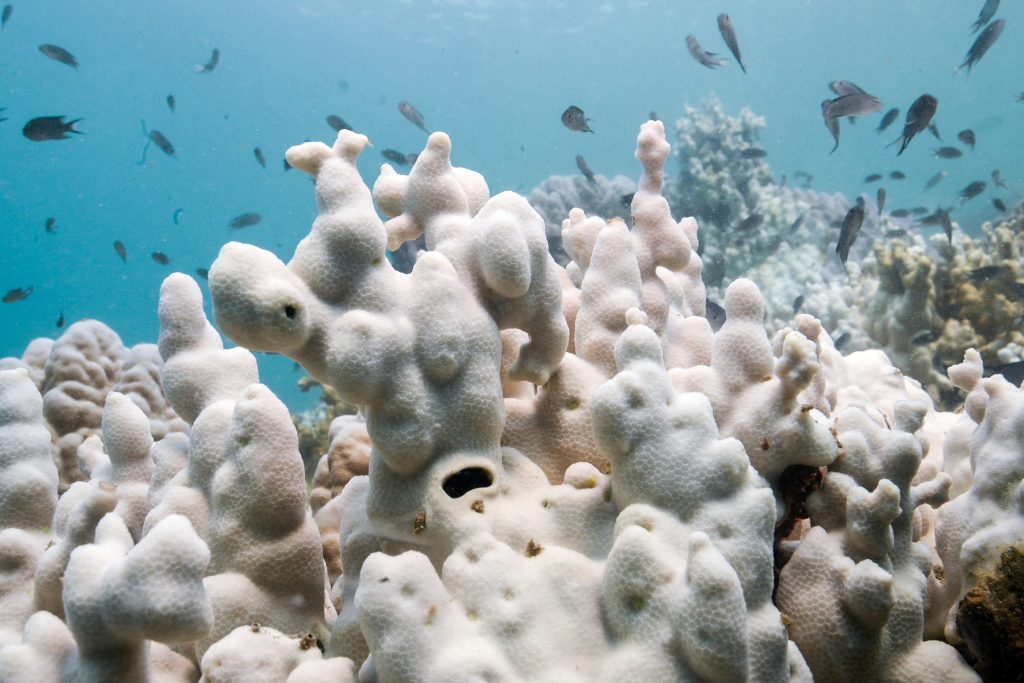Context:
Recently, the National Oceanic and Atmospheric Administration (NOAA) reported that the fourth global coral bleaching event (GCBE4) commenced in January 2023, marking it as the most extensive and severe coral bleaching recorded to date.
More on the News

- This event has surpassed previous levels observed during GCBE 3 (2014-2017) by over 11%, as reported by the NOAA.
- During GCBE3, over 65.7% of the world’s coral reefs faced bleaching-level heat stress. This previous event was noted for being the longest and most damaging on record.
Impacts of GCBE4
- The ongoing GCBE4 has affected 77% of global reef areas in just 20 months, a stark contrast to the three-year duration of its predecessor, GCBE3.
- Reports indicate mass coral bleaching across 74 countries, with regions like Palau, Guam, and Israel confirming significant impacts.
- The Caribbean and South China Sea continue to experience high heat stress levels, exacerbating the crisis.
- The rapid escalation of GCBE4 suggests that coral ecosystems are now experiencing unprecedented stress, with severe implications for biodiversity and marine health.
Expert Opinions:

- In response to the widespread coral bleaching, scientists from the UN have called for a special emergency session on coral reefs during the upcoming Convention on Biological Diversity summit (COP16) in Cali, Colombia.
- If current ocean temperatures remain, the world may face more or less a state of chronic global bleaching.
Impact of El Niño-Southern Oscillation (ENSO) on Coral
- Historically, strong El Niño events have been associated with severe bleaching; however, recent occurrences have shown that significant bleaching can also arise during La Niña phases.
- This shift indicates that ocean temperatures are now high enough to cause large-scale bleaching regardless of ENSO conditions.
Overview of The Global Coral Bleaching Events (GCBE) events
- GCBE1 (1998): The first global coral bleaching event occurred in 1998, primarily driven by elevated sea temperatures associated with a strong El Niño phenomenon.
- GCBE2 (2010): The second event took place in 2010, again influenced by rising ocean temperatures due to El Niño conditions. This event was notable for its impact on the Coral Triangle region, particularly in Southeast Asia.
- GCBE3 (2014-2017): The third global coral bleaching event spanned from 2014 to 2017, recognized as the longest and most severe to date.
- GCBE4 (2023-Present): The ongoing fourth global coral bleaching event began in January 2023.

